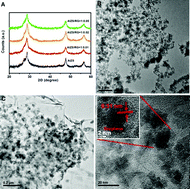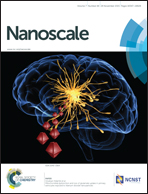Nanocomposites of AgInZnS and graphene nanosheets as efficient photocatalysts for hydrogen evolution†
Abstract
In this study, AgInZnS–reduced graphene (AIZS–rGO) nanocomposites with tunable band gap absorption and large specific surface area were synthesized by a simple hydrothermal route, which showed highly efficient photocatalytic hydrogen evolution under visible-light irradiation. The relationships between their crystal structures, morphology, surface chemical states and photocatalytic activity have been explored in detail. Importantly, the AIZS–rGO nanocomposites with 0.02 wt% of graphene exhibited the highest hydrogen production rate of 1.871 mmol h−1 g−1, which was nearly 2 times the hydrogen production rate when using pure AIZS nanoparticles as the photocatalyst. This high photocatalytic H2-production activity was attributed predominantly to the incorporation of graphene sheets, which demonstrated an obvious influence on the structure and optical properties of the AIZS nanoparticles. In the AIZS–rGO nanocomposites, graphene could not only serve as an effective supporting layer but also is a recombination center for conduction band electrons and valence band holes. It is believed that this kind of graphene-based material would attract much attention as a promising photocatalyst with a high efficiency and a low cost for photocatalytic H2 evolution and facilitates their application in the environmental protection field.


 Please wait while we load your content...
Please wait while we load your content...